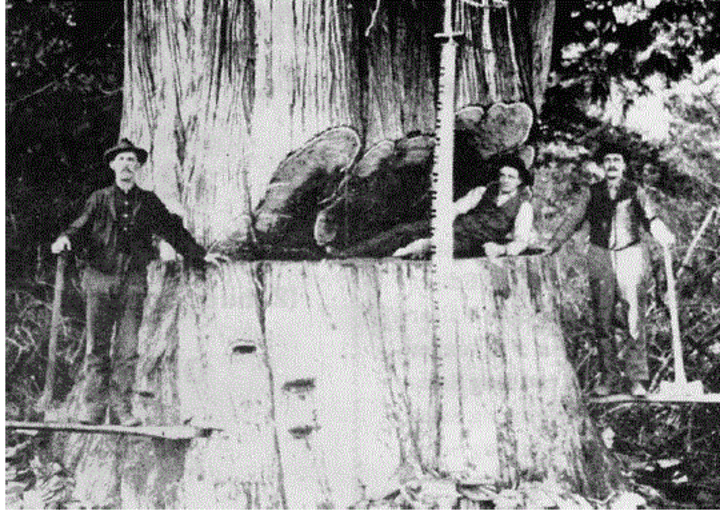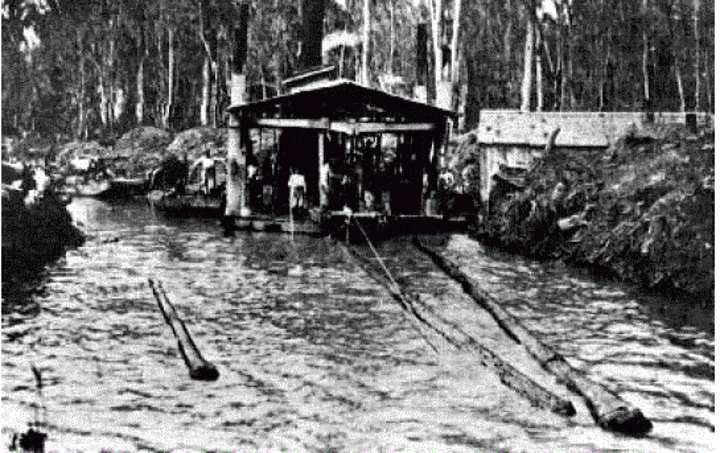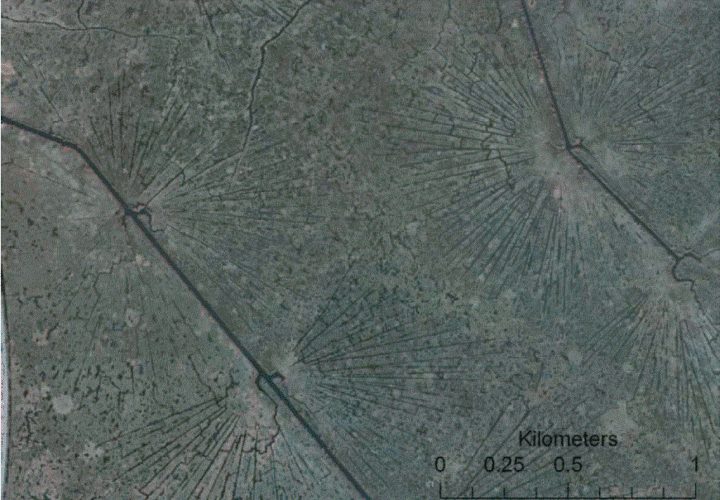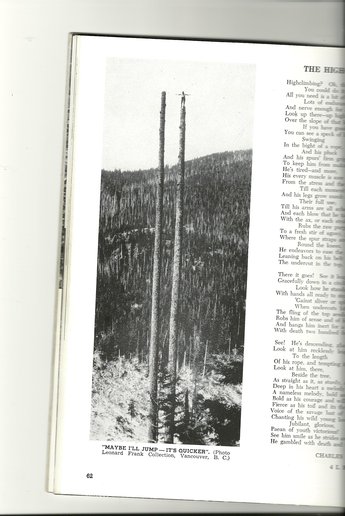whizkidkyus
Member
- Location
- South Central , Ky.
Before the chain saw they said the trees would last forever
Today's post is an amazing look at a period of our history that wasn't that long ago involving the challenges loggers faced every day to earn their wages. Remember this the next time you think your job is demanding.
Before chainsaws were invented, the logging industry in the United States & Canada was a seriously challenging occupation and we are only talking about 125 years ago. In the Pacific Northwest there were forests full of monster trees and cutting them down was done by hand.
Look at the length of the two-man hand saw and heavy duty axes they used to drop these tremendous trees. It is almost inconceivable to think of cutting a tree this size with a hand saw.
The work required very strong men (and horses) working long days for minimal pay. Could you imagine doing this to earn a living?
After a tree was finally felled it took a week or more to cut it up into sections that could be managed (somehow) and transported by train to a lumber yard.
Maneuvering the logs down the mountain to the train was a complex job. I didn't do any research on this, but I would be willing to bet that many men lost their lives doing this dangerous work. One slip and a hunk of wood as big as a hotel is rolling your way! The other question that begs an answer is how did they get those logs onto the flatbeds of that train?
Hollowed out logs became the company's mobile office. Can you imagine stacking such logs to build a log home? Two courses would produce a 30Åå ceiling. Maybe that's why it was easier to hollow out a tree.
A long time before anyone ever thought of a "mobile home or RV" hollowed out logs were also used to house and feed the logging crews.
We are accustomed to our modern conveniences like electricity and gasoline powered chainsaws, and it is always such a mind-boggling experience to see how such monumental tasks were performed before these conveniences appeared on the scene.
Share this with your friends, even those who don't live in a log home will enjoy this 'blast from the past'!

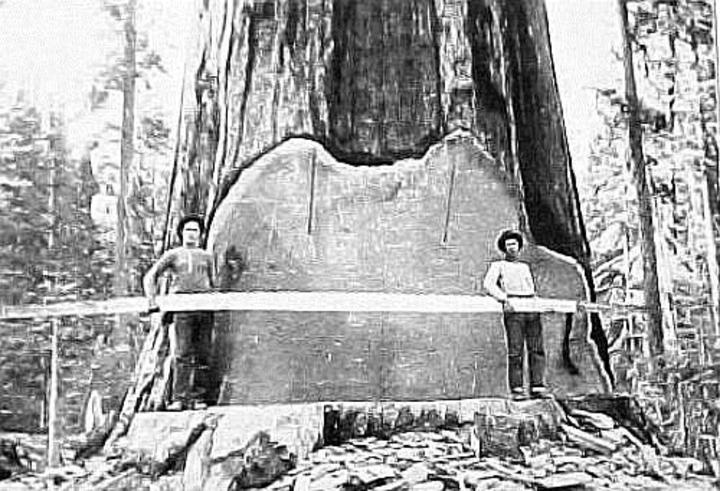
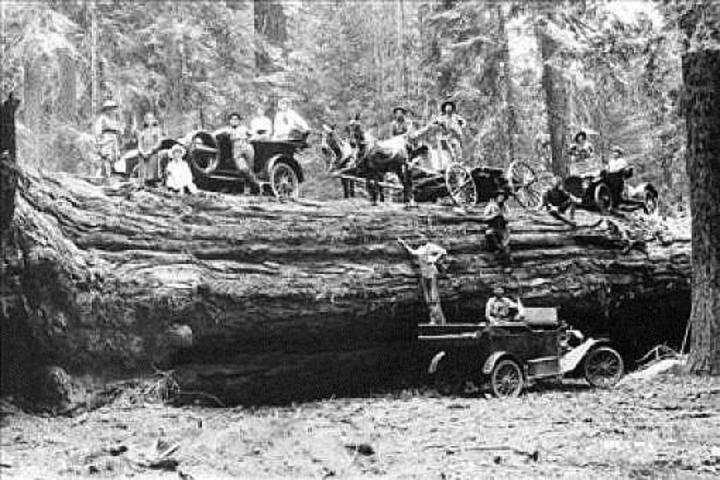
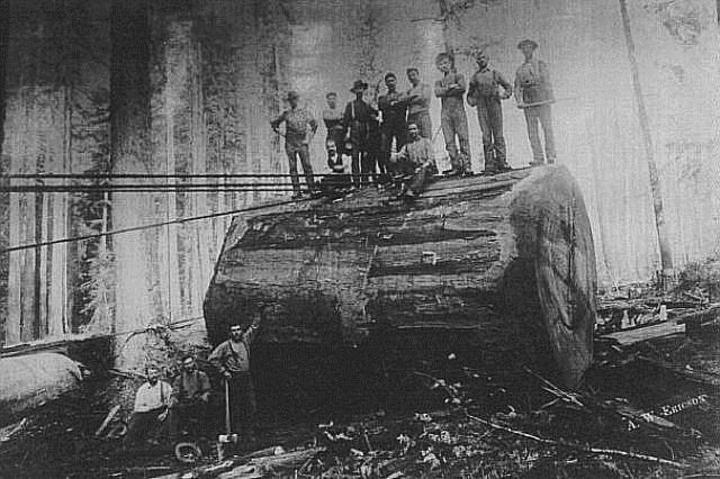
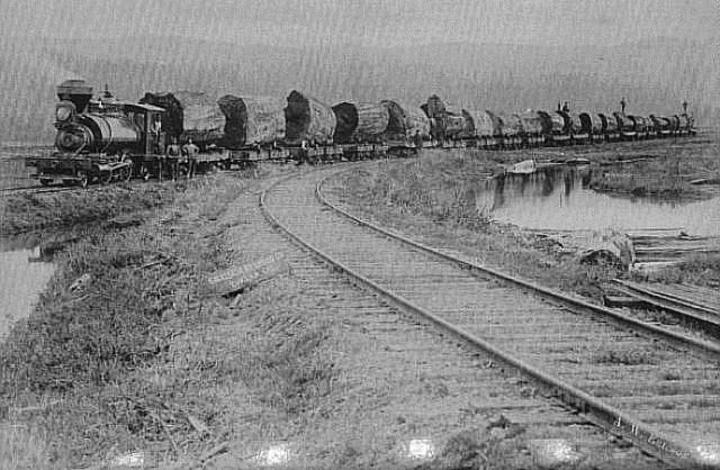
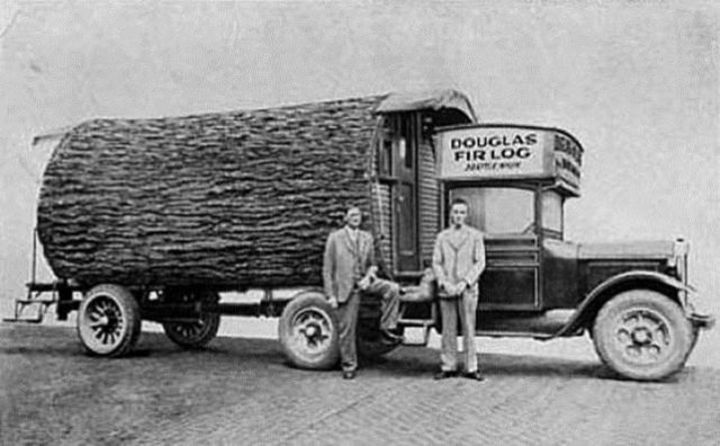

Today's post is an amazing look at a period of our history that wasn't that long ago involving the challenges loggers faced every day to earn their wages. Remember this the next time you think your job is demanding.
Before chainsaws were invented, the logging industry in the United States & Canada was a seriously challenging occupation and we are only talking about 125 years ago. In the Pacific Northwest there were forests full of monster trees and cutting them down was done by hand.
Look at the length of the two-man hand saw and heavy duty axes they used to drop these tremendous trees. It is almost inconceivable to think of cutting a tree this size with a hand saw.
The work required very strong men (and horses) working long days for minimal pay. Could you imagine doing this to earn a living?
After a tree was finally felled it took a week or more to cut it up into sections that could be managed (somehow) and transported by train to a lumber yard.
Maneuvering the logs down the mountain to the train was a complex job. I didn't do any research on this, but I would be willing to bet that many men lost their lives doing this dangerous work. One slip and a hunk of wood as big as a hotel is rolling your way! The other question that begs an answer is how did they get those logs onto the flatbeds of that train?
Hollowed out logs became the company's mobile office. Can you imagine stacking such logs to build a log home? Two courses would produce a 30Åå ceiling. Maybe that's why it was easier to hollow out a tree.
A long time before anyone ever thought of a "mobile home or RV" hollowed out logs were also used to house and feed the logging crews.
We are accustomed to our modern conveniences like electricity and gasoline powered chainsaws, and it is always such a mind-boggling experience to see how such monumental tasks were performed before these conveniences appeared on the scene.
Share this with your friends, even those who don't live in a log home will enjoy this 'blast from the past'!









